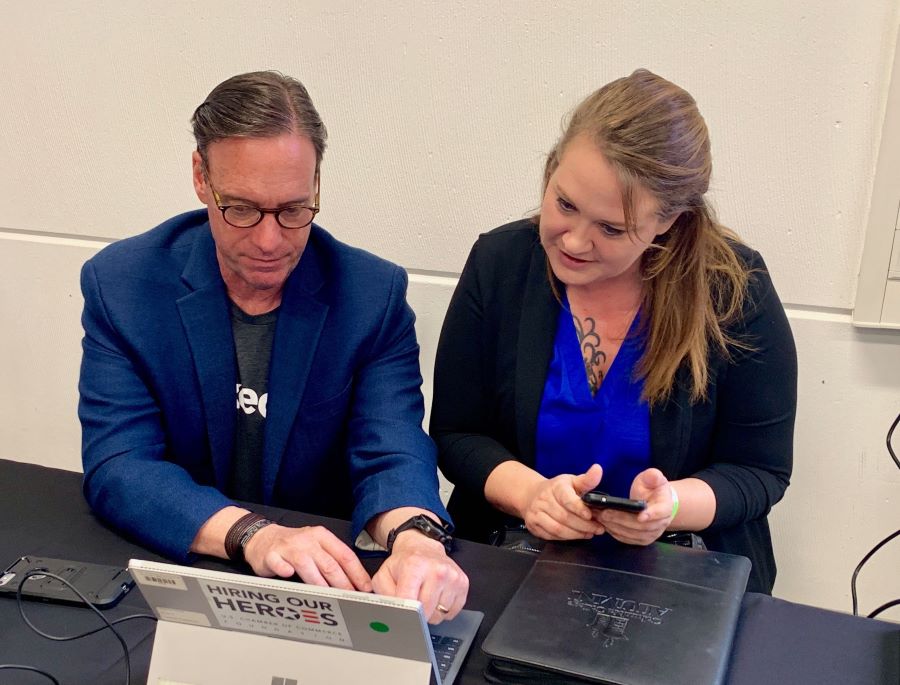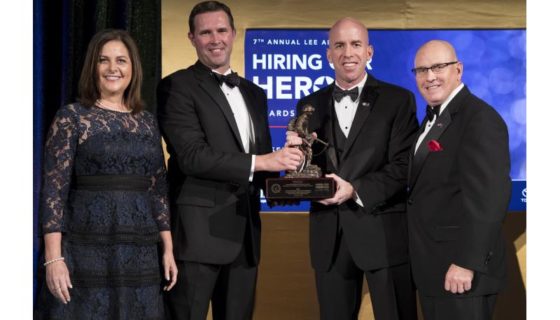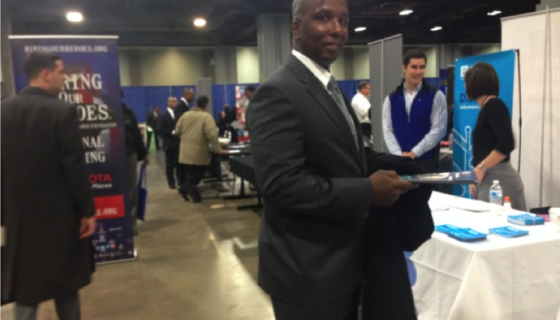5 KonMari-Inspired Tips to Help Your LinkedIn Profile Spark Joy for Yourself and Job Recruiters

Between Marie Kondo’s best-selling book and her popular Netflix series, it seems like everyone is tidying up their closets and asking themselves “does this spark joy?”
What about our LinkedIn profiles? Can they spark joy?
Is there a way to take Marie Kondo’s strategies for decluttering and apply them to LinkedIn? Can KonMari-inspired tips make your online professional identity shine in the eyes of a job recruiter combing through the clutter of job candidates?
Here are five KonMari-inspired lessons to help your LinkedIn profile spark joy for yourself and job recruiters.
1. Remove the Clutter
Your headline and summary are the first two things that job recruiters see when they review your LinkedIn profile. In less than 30 seconds, they decide if you, the job candidate, spark joy for them.
“Almost all employers, including Booz Allen, use LinkedIn to find employees and post opportunities. Period,” said Laura Schmiegel, a lead associate for Military Programs at Booz Allen Hamilton. “You should approach LinkedIn the same way you would approach a resume. Consider what employers you would like to attract and tailor your profile to anticipate their needs.”
Your summary is your digital elevator pitch – be clear about who you are, what you’ve done, and what you want to do.
This summary, written in first person, is your targeted approach for getting the job that you want or networking with a person who may be able to connect you with a position in your chosen field. Your summary language needs to be precise, so avoid using generic terms.
Remove military language clutter from your LinkedIn profile. “Job recruiters, unless they served in the Army, do not know what a first sergeant is or what they do on a daily basis,” said Gary Soldato, Director of Sports and Entertainment Expos at Hiring Our Heroes.
Avoid using the words “transitioning veteran” and “seeking new opportunities” in your headline; replace your military rank or rate with manager or supervisor.
An easy way to translate your military skills to the civilian vernacular is to incorporate terms used by job recruiters, explained LinkedIn’s Head of Military and Veterans Programs Sarah Roberts.
“Grab three or fourth job descriptions that you are interested in and that you think you are qualified for and use that to help your LinkedIn profile,” Roberts said.
Having trouble translating your military experience? Register for a free LinkedIn workshop offered by Hiring Our Heroes.
2. A Gray Profile Box Does Not Spark Joy
“Any gray area on LinkedIn is a bad thing,” Soldato told a group of military job seekers at a Hiring Our Heroes LinkedIn workshop.
Be really thoughtful about the profile picture and the background photo that you use in your LinkedIn profile, Roberts said.
“If you’re transitioning from the military, you should think about not using a military photo and using a photo of you in your civilian clothes,” she said.
There’s no excuse for not having a professional head shot – Hiring Our Heroes provides free head shots for AMPLIFY career intensives and Career Summits participants.
3. Follow Companies That Spark Joy
The next step is to research and connect with potential employers. Do you have a list of targeted companies that you would like to work for? If you don’t, you risk wasting your time and energy applying for positions at companies that aren’t a good match.
How do you find companies that are a good match? Search the U.S. Chamber of Commerce’s directory to find your local Chamber of Commerce and then visit your chamber’s directory of local companies.
Do you want to work for an employer that values the experiences that veterans and military spouses bring to their organizations? Browse the list of our employment partners and connect with these companies on LinkedIn.
When you follow these companies on LinkedIn, you’ll be able to see your connections at this company, new hires, promotions, jobs postings, related companies, and company statistics.
Roberts recommends that you make a habit of regularly using LinkedIn, even if you aren’t looking for a job.
“Engagement is key,” she said. “I highly recommend engaging, liking, commenting, and posting on LinkedIn to stay connected with your network.”
4. Apply for Jobs that Spark Joy
When you find a job listing with your targeted company, it’s tempting to immediately fire off your resume to the job recruiter. But please, follow Kondo’s advice on visualization before emailing your cover letter and resume.
Ask yourself these three questions:
- Does this job align with your career goals?
- Do you visualize yourself thriving in this position?
- Will this position lead you on the path to your dream job?
If the job opening doesn’t spark joy in you, then hold off on sending your resume.
5. Thank the Opportunities that Didn’t Work Out — Then Move On
At one time or another, each of us accepted a job because we needed the income, not because the position sparked joy. It sounds cheesy, but thank that job for the gift it gave you and then mentally set yourself free of it. You don’t have to include every job you ever had on your LinkedIn profile and resume.
Fill your LinkedIn profile with your relevant work and volunteer experience – the experiences that sparked joy – and nothing else.



